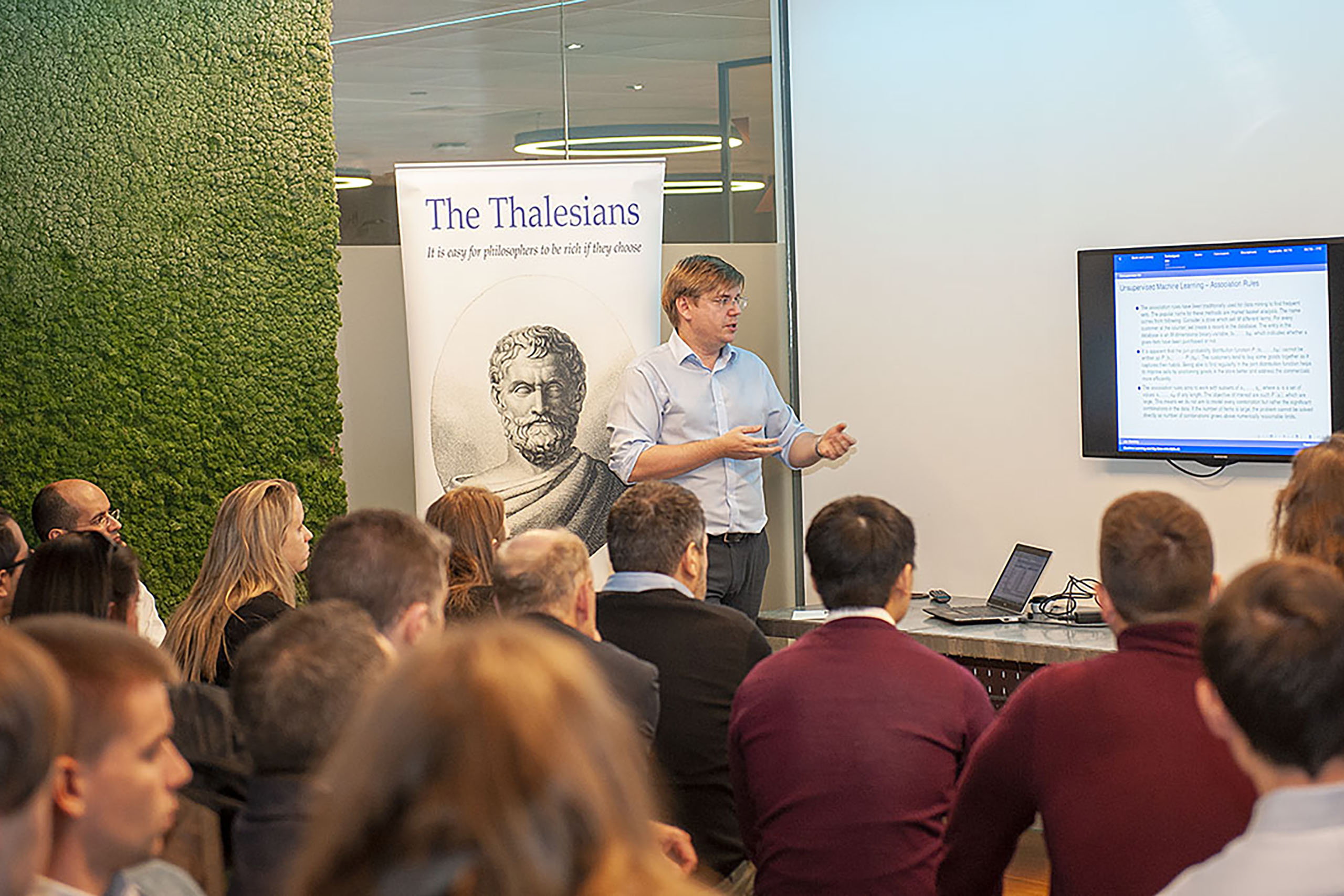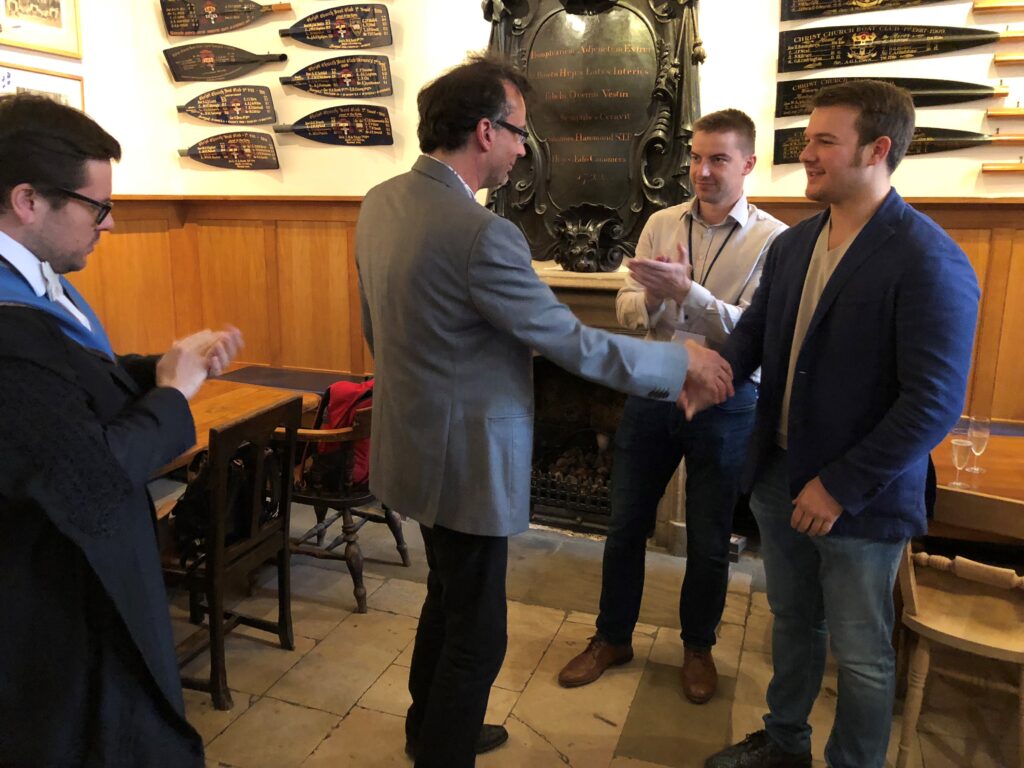Pioneering
Graduate Training Programmes
Fostering a new generation of leaders
Education
Graduate Training Programmes
A graduate training programme, also known as a graduate
scheme or graduate development programme, is a structured training programme designed to provide recent graduate (be it undergraduate or postgraduate; bachelors, masters, MBA, or MRes/MPhil, PhD/DPhil) with the necessary skills and knowledge for a specific profession or industry. These programmes are typically offered by large organisations in sectors such as banking, consulting, technology, and engineering.
Some graduate training programmes start with an intensive in-person one- to three-month course, where recent hires from several locations (e.g. London, Paris, Frankfurt, New York, and Tokyo) are all gathered at a
single location, usually the corporate headquarters. In particular, Morgan Stanley is known for its Technology Graduate Training programme, where graduates from three or more locations were transported to Manhattan, New York. These graduates spent three months at corporate accommodation in Manhattan, while attending full-time training at 1585 Broadway.
Since the 2007-2008 Global Financial Crisis the graduate training programmes have been somewhat scaled down. Instead of a single
intensive course, the graduate training programmes are structured to last between one to two years and consist of a combination of classroom-based training, on-the-job learning, and rotations across different departments or teams. The aim is to develop graduates into well-rounded professionals with a deep understanding of the company’s operations and industry. Since the start of the COVID-19 pandemic, graduate trainings have been delivered in hybrid mode,
spanning several geographic locations, and the graduates are rarely transported to a single geographical location.
It is common for such programmes to introduce mentorship schemes, where a recent graduate is paired with a more experienced, former graduate of the graduate training programme. It is also common to pair two graduates attending a particular graduate training programme as graduate training buddies, so they work together and motivate each other.
Participants in these programmes may receive mentorship from senior employees, work on real projects, attend workshops and seminars, and gain exposure to various aspects of the business. The goal is to fast-track the development of graduates, enhance their skills, and prepare them for future leadership roles within the organisation.
Several global financial institutions, such as Citigroup, have introduced graduate training programmes for quants (at Citigroup – the Markets Quantitative Analytics (MQA) division), who tend to have prior academic and/or industry experience and hold advanced degrees such as MSc in quantitative finance and/or PhD/DPhil. These graduate training programmes tend to be more advanced, with specific focus on cutting edge techniques originating in the industry and/or the academe.


Historical
Background
The first graduate training programme in banking was created by J.P. Morgan in the late 19th century. J.P. Morgan & Co. established a programme to recruit and train college graduates for careers in banking and finance. This initiative laid the foundation for modern-day graduate training programmes in the banking industry.
The J.P. Morgan Analyst Programme typically lasts for two to three years and offers opportunities in various areas such as investment banking, sales and trading, risk management, technology, and asset management. The programme is available in different regions, including the Americas, Europe, Middle East, Africa, and Asia Pacific.
The programme consists of a combination of classroom-based training, on-the-job learning, and rotations across different teams or departments. Participants receive extensive training that covers technical skills, industry knowledge, and professional development. They also have the opportunity to work on real projects and interact with clients and senior leaders.
Several banks, such as BNP Paribas, split their graduate training programmes into several parts, and deliver intensive trainings prior to, and in the middle of, graduate rotations (interrotational trainings).

Thought leadership
Industry Impact
Several famous bankers started off as graduate trainees before achieving great success in the industry. Some notable examples are as follows:
- Lloyd Blankfein, the former CEO of Goldman Sachs, started his career at the firm as a gold trader before rising through the ranks. He joined Goldman Sachs as a summer associate and eventually became the CEO in 2006.
- Nikolaus von Bomhard, the former CEO of Munich Re, started his career as a graduate trainee and eventually became the turnaround boss of the German insurer. He rescued Munich Re from losses, risky investments, and negative publicity.
- Ana Botín, the executive chairman of Banco Santander, started her career at J.P. Morgan as an analyst in the mergers and acquisitions department. She later joined Banco Santander and became the CEO of the UK division before assuming her current position.
- Jaimie Dimon, the CEO of J.P. Morgan Chase, began his career as a management trainee at American Express before joining Citigroup as an assistant to the chairman. He later became the CEO of Bank One, which was acquired by J.P. Morgan Chase in 2004.
- Jane Fraser, the CEO of Citigroup, started her career as a graduate trainee at Goldman Sachs. She joined Citigroup in 2004 and held various leadership positions before becoming the CEO in 2021, making her the first woman to lead a major U.S. bank.
- James Gorman, the CEO of Morgan Stanley, began his career as a graduate trainee at McKinsey & Company. He later joined Merrill Lynch and then joined Morgan Stanley in 2006, where he became the CEO in 2010.
- Antony Jenkins, the former CEO of Barclays, started his career as a graduate trainee at Barclays in the early 1980s. He worked his way up through the organisation, holding various positions before becoming the CEO in 2012.
- Jes Staley, the CEO of Barclays, started his career at Morgan Guaranty Trust Company as a management trainee. He worked his way up through various roles in investment banking before joining J.P. Morgan, where he eventually became the CEO of the investment bank division.
- John G. Stumpf, the former CEO of Wells Fargo, began his career at the bank as a graduate management trainee. He held various positions within the company before becoming the CEO in 2007.
- Tidjane Thiam, the former CEO of Credit Suisse, began his career as a management trainee at McKinsey & Company. He later worked at various financial institutions, including Aviva and Prudential, before joining Credit Suisse as the CEO in 2015.
In the quantitative finance space, several leading individuals have gone through (or helped institute!) graduate training programmes for quants:
- David Shaw, the founder of D.E. Shaw & Co., started his career as a computer science professor at Columbia University. He later joined Morgan Stanley as a quantitative researcher and ultimately founded his own quantitative hedge fund.
- James Simons, the founder of Renaissance Technologies began his career as a codebreaker during the Vietnam War. He later joined Stony Brook University as a mathematics professor and eventually transitioned to finance, establishing one of the most successful quantitative hedge funds in the world.
- Ed Thorp, a mathematician and hedge fund manager, started his career as a professor of mathematics. He later became a successful blackjack player and used his mathematical skills to develop quantitative trading strategies. Thorp is considered a pioneer in the field of quantitative finance.
- Emanuel Derman, a renowned quant and author, originally pursued a career in theoretical physics. He began working at Goldman Sachs as a quantitative analyst, where he developed models for pricing financial derivatives. Derman’s work has had a significant impact on the field of quantitative finance.
- Cathay O’Neil, a mathematician and data scientist, initially worked as a quantitative analyst at various financial institutions, including Lehman Brothers. She later transitioned to data science and became an advocate for ethical and responsible use of algorithms in finance and society.
- Igor Tulchinsky, structured WorldQuant’s graduate training programme as WorldQuant University. Tulchinsky established WorldQuant University in 2016 as a non-profit institution with a mission to offer accessible education in the field of quantitative finance.
Why Graduate Training?

Graduate training
Advantages
Structured upskilling
There is a significant disparity in the background of graduates (BSc, MSc, MBA, PhD, etc.) coming from different programmes and different academic establishments. The designers of the graduate training programmes identify the key skills, techniques, and technologies (both proprietary and external) that their graduates should have experience in. This enables the graduate training vendor, in conjunction with the financial institution, to enable a highly specialised programme that will upskill the graduates at speed.
Employee morale
One of the most important aspects of graduate training
programmes is the effect that they have on the employee morale. Successful graduate training programmes are designed to be industry-leading, informative, engaging, and fun. This is particularly important in these challenging times. The employees get the opportunity to work together on challenging topics and real-world projects. This builds up excitement and ultimately loyalty to their
employer. The financial institution makes their employees feel special, unique, members of an elite community within an elite organisation. This boosts the employees’ morale and productivity.
Speed networking
Due to the structured nature of graduate training programmes, the graduates gain the opportunity to network with each other,
other employees, human resources professionals, management, including senior management, as well as industry experts and world-leading academics brought in by the graduate training programme vendor. This serves as an ice breaker and enables the graduates to establish a network of contacts that will help propel
their career at the financial institution, foster and cement their position as industry leaders.
Speed organisational assimilation and socialisation
Graduate training programmes are not only about the content.
They are about the organisation’s values, traditions, and processes. Graduate training programmes serve to initiate the graduates into the organisation’s culture and speed up the new hires’ organisational assimilation.
Staying at the cutting edge
Financial institutions typically outsource their graduate
training programmes to external vendors, specialist training providers. This enables these institutions to bring in external instructors, who are experts in their respective fields. This is particularly important in the present rapidly changing environment, where market trends and regulations change at astonishing rates, and since the emergence of Large Language Models (LLMs) such as ChatGPT, the rate of progress in artificial intelligence (AI) has become near-exponential. On the other hand, the graduate training programme vendor has the resources and expertise dedicated to tracking the rapidly changing market environment, identifying the most important technologies and emerging technological trends, and bringing on board key experts from the industry and the academe.
Key resource preservation and key person risk reduction
By engaging an expert vendor, financial institutions free up
the time of their in-house talent. While in-house experts may contribute to graduate training programmes on an ad hoc as-needed basis, their efforts are usually required in their day-to-day duties such as team management, model development, and trading.
Team building and cohesion
Graduate training programmes typically include team building
activities to help the graduates recharge their batteries and build team cohesion. The team spirit created during group projects and team building activities will persist throughout the graduates’ professional lives. Such projects and activities help develop the graduates’ teamwork skills.
Staff retention
It has been shown that successful graduate training programmes contribute to staff retention and employee loyalty.
Customisation
Bespoke graduate training programmes are usually designed to
match the organisation’s specific business aims and objectives. For example, Morgan Stanley’s celebrated IT graduate training programme is subdivided into three tracks: Distributed (hardcore IT in finance), Application Development and Integration (with an emphasis on integration and support functions), and Networking and Cybersecurity. Such customisation is appropriate for diverse
asset classes and quantitative roles (e.g. model validation, risk, derivatives pricing, and e-trading).
Why us?

Graduate training
Why Thalesians Ltd?
Thalesians Ltd is an expert training company that is helping
FORTUNE 500 companies realise the new industrial revolution. Thalesians Ltd stays at the forefront of quantitative and computational finance, financial software development, regulatory compliance, high performance computing, quantum computing, and machine learning and artificial intelligence in finance and beyond.
Thalesians Ltd was co-founded by Dr Paul Bilokon, himself an
alumnus of the Morgan Stanley graduate programme. Paul has worked in senior positions at Morgan Stanley, Lehman Brothers, Citigroup, and Deutsche Bank, where he served as the Global Head of Markets Electronic Trading Quants. He has impeccable academic credentials, having come top of his class at Oxford,
received a PhD from Imperial College, and having served as Visiting Professor at Imperial College. He has co-authored a standard textbook on financial machine learning, Machine Learning in Finance (with Dixon and Halperin, Springer) and big data (Big Data and High Frequency Data in kdb+/q, Wiley). Paul has also held the prestigious Lectureship in Mathematics for Computer Science and Artificial Intelligence at Imperial College.
Thalesians Ltd engages more than 100 leading experts in industry and academe to deliver our graduate training programmes. Some of our instructors have become household names: Prof. Claudio Albanese (high-performance computing and quantitative finance expert), Saeed Amen (world-leading alternative data expert), Dr Luigi Ballabio (the author of QuantLib), Dr Adam Baranowski (a world-class kdb+/q developer), Prof. Dan Crisan (stochastic calculus expert), Prof. Matthew Dixon (machine learning in
finance pioneer), Dr Daniel J. Duffy (an expert on financial and modern C++), Prof. Blanka Horvath (the co-inventor of deep learning volatility), Dr Antoine (Jack) Jacquier (a world-leading expert on rough volatility). Some of our instructors have led multi-billion dollar trading desks. Others have contributed to the evolution of modern quantitative finance and development.
Our company has delivered trainings to ADG Trading LLP, Bloomberg, BNP Paribas, CME Group, Crédit Agricole, Deutsche Bank, Fidelity, Government Actuary’s Department, G-Research, GSA Capital, GTS, Jefferies, J.P. Morgan, KX Systems, LSEG, NVIDIA, and qSpark HFT.
Graduate trainees
0
Instructors
0
Years of experience
0